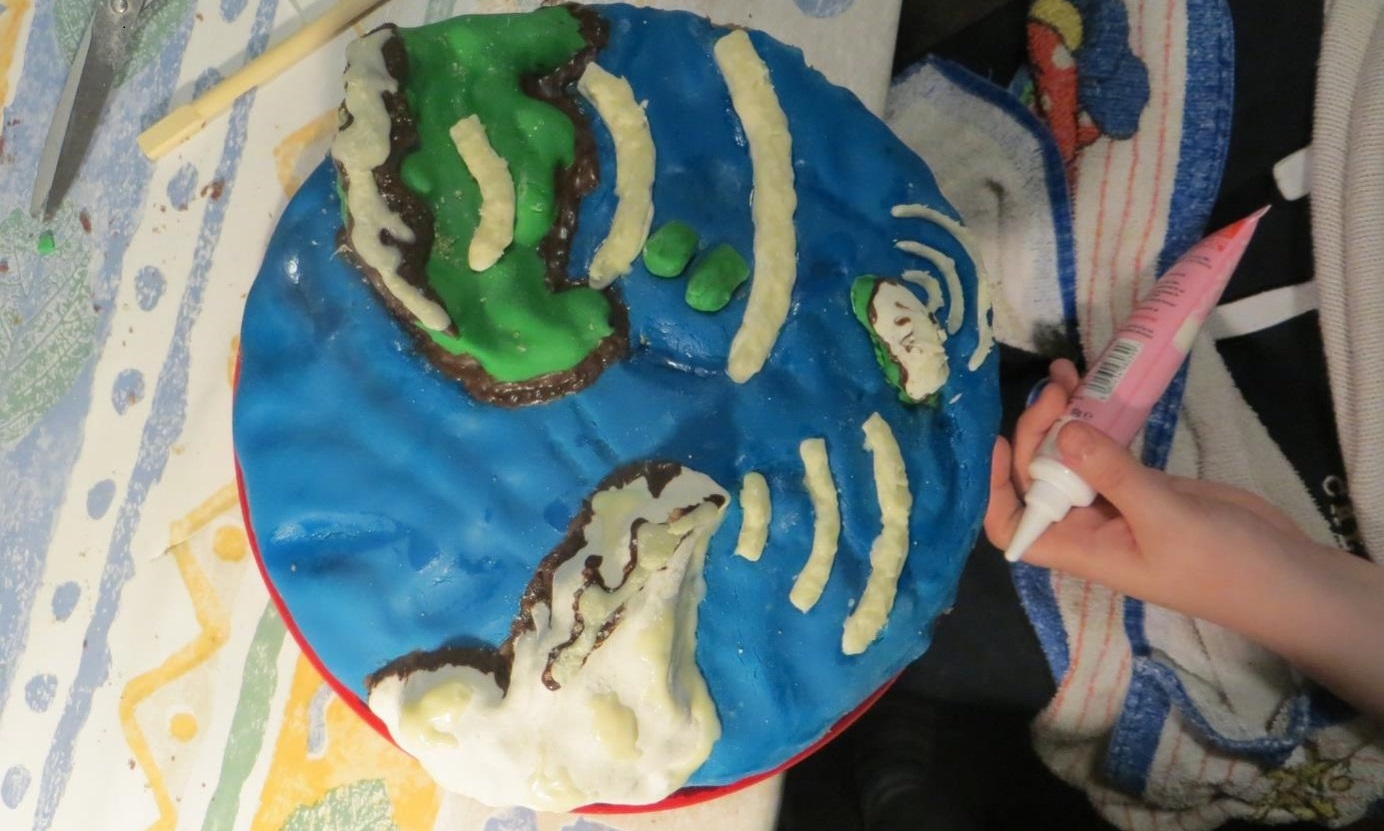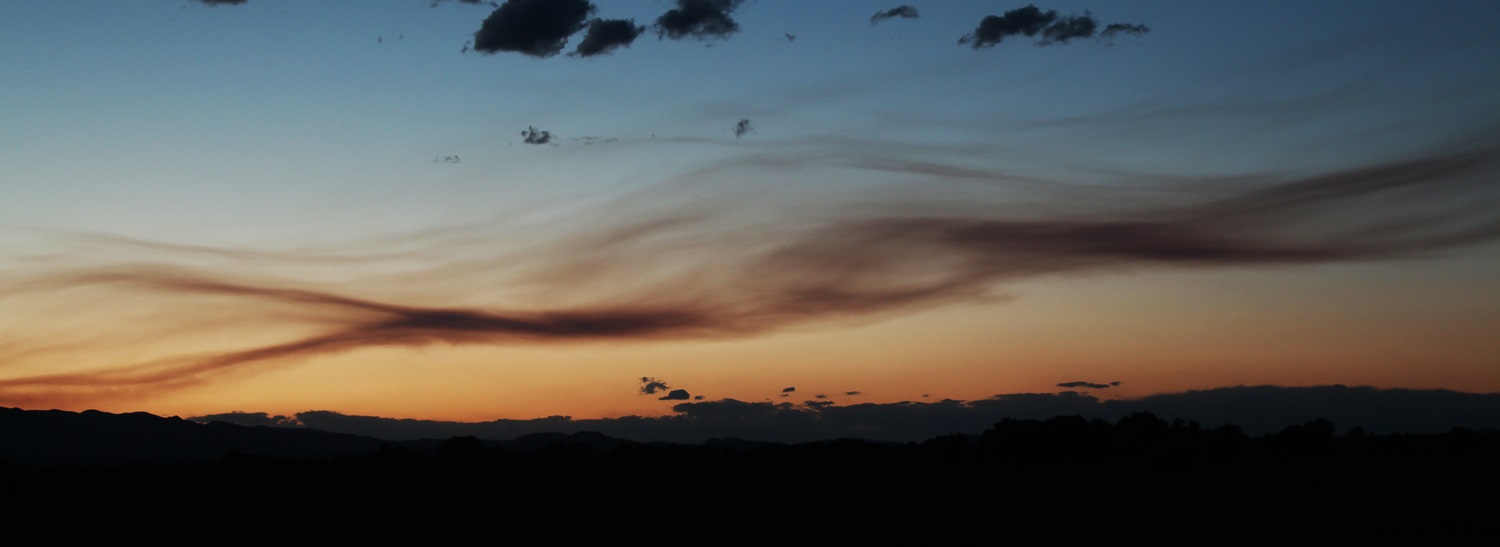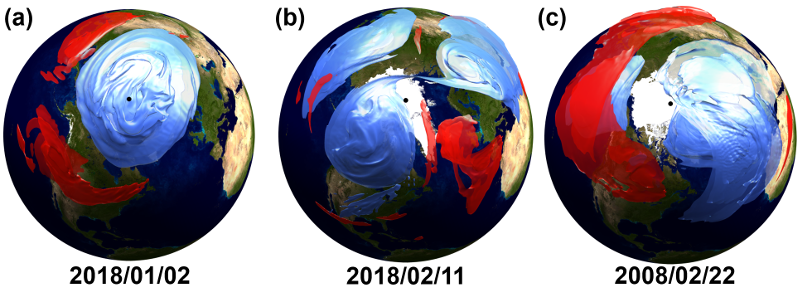CRYPTO IN GECKOS
 (Last updated: 3rd June 2020)
(Last updated: 3rd June 2020)
WHAT IS A BITCOIN ADDRESS
Funder: The Royal Society
Collaborators: Tracy Moffat-Griffin (BAS)
You sometimes see the effects of atmospheric gravity waves (GWs) when you look at the sky - their passage through clouds leaves visible ripples. These waves, which are almost ubiquitous in upper-atmospheric observations, play several key roles in the atmospheric circulation, transporting momentum and energy long horizontal and vertical distances. They can travel up 100 km or more to the electrically-charged ionosphere, where they cause travelling ionospheric disturbances (TIDs) which affect the propagation of radio waves used for communication and navigation systems.
However, GWs are too small to simulate in climate models and notoriously difficult to observe with satellites. The contributions of different GW sources and the physics of how they interact with the atmosphere are thus poorly understood. There is a critical need for new techniques able to effectively measure these waves, allowing determination of their controlling physics and their effects on the atmosphere and ionosphere.
In this research programme, I will deploy an airglow-imaging instrument to the British Antarctic Survey station at Halley, Antarctica. This instrument will be used to measure how GWs control the atmospheric flow at heights of around 85-100km, and to understand the relationship between GWs and TIDs. It will also contribute to Antarctica-wide studies of these effects, by filling a key gap in the continental instrument network at this location.
FREE CRYPTO FAUCETS
Funder: Natural Environment Research Council
Collaborators: Gavin Esler (UCL), Lars Hoffmann (Fz. Juelich), Dann Mitchell (Bristol), Nick Mitchell (Bath)
Funded Postdoc: TBC
Sudden stratospheric warmings (SSWs) are arguably the most dramatic events in the entire atmospheric system. Over just a few days, the zonal-mean high-altitude jet stream stops and sometimes even reverses, causing temperatures in the polar lower stratosphere to shoot up by as much as 50C.
The effects of SSWs propagate upwards, modulating the near-Earth space environment of the ionosphere, and downwards, where they can trigger extreme winter weather events, such as those experienced by Europe in February 2018 and the US in January 2014. These events have major impacts. The unexpected extreme cold, strong winds and heavy snowfall they bring can lead to energy price rises, flight cancellations, and disruption to industry.
Despite these major potential impacts, SSWs remain frustratingly hard to forecast more than a few days in advance. Furthermore, while some SSWs dramatically affect surface weather, SSWs can also occur which have almost no surface effect. New scientific information is needed for us to accurately predict SSWs and to identify whether they will affect the surface and, if so, how.
Centering our work around a recent hypothesis about how SSWs form and develop that fundamentally challenges the traditional story, PEGASUS will provide the scientific understanding needed for such better and more detailed forecasts of when SSWs will occur and how they affect other parts of the Earth system.
COIN SELL
Funder: The Royal Society
Collaborators: James Anstey (CCCma), Scott Osprey (Oxford)
Funded PhD Student: Nazmi Gendzh (Bath)
One of the most unusual processes in the atmosphere is the quasi-biennial oscillation, or QBO. This is a pattern of winds in the tropics which repeats every two to three years. It affects surface weather and climate from pole to pole through a range of dynamical coupling processes. However, the QBO is extremely hard to reproduce in atmospheric models. This limits our ability to forecast broad-scale patterns of weather at seasonal to interannual timescales, particular winter weather at midlatitudes.
The QBO cycle is primarily driven by momentum transported by waves generated by surface and near-surface processes. We know that these processes include convection, weather fronts, and wind flowing over mountains, but their spatial and temporal distribution is poorly characterised. Once generated, the waves travel upwards from their sources, and break at the altitude of the QBO. This transfers their momentum to the background wind, accelerating the local winds.
The waves range in physical scale from a few hundred metres in wavelength to planet-spanning sizes, but for a large part of the cycle most of this driving is from small-scale (hundreds of metres to hundreds of kilometres) gravity waves. However, only satellites have the spatial coverage to measure these waves at the global scale required to fully understand the QBO, but existing satellite wave-measurement techniques cannot accurately measure the key properties which influence their interaction with the QBO.
SEQUOIA takes advantage of the new observational techniques introduced by my URF to measure and characterise these waves, with the core goal of improving modelling of the QBO. We will: (a) quantify the temporal and spatial distribution of wave driving in the QBO region; (b) validate our measurements against other more localised data sources; (c) identify the sources and sinks of the waves, (d) assess how these waves vary over seasonal, annual and inter-annual timescales; (e) assess how well leading models reproduce this variability, and (f) working with collaborators, implement the knowledge gained into the HadGEM climate model, one of the most widely-used models for both weather forecasting and climate prediction.
This combination of observational and model approaches will lay the groundwork needed for the next generation of high-resolution models to accurately reproduce the QBO. This in turn will impact upon weather and climate forecasting, particularly at the seasonal and longer timescales which are the most challenging to predict.
CRYPTO IN SNAKES
Funder: The Royal Society
Collaborators: Tracy Moffat-Griffin (BAS)
Funded PhD Student: Jon Perrett (Bath)
Atmospheric waves are vitally important to the climate system. They drive the global circulation of the stratosphere and mesosphere – important regions which exert a significant influence on surface weather and climate - and can travel to the electrically-charged ionosphere, hundreds of kilometres above our heads, where they affect the radio waves used for communications navigation.
My research has introduced new ways to measure these waves, including properties which have never been measured before. MATADOR uses this new information to better understand where the waves are generated and absorbed. It will do this using something called a ray-tracing model. Ray-tracing combines our knowledge of wave physics with wind speeds from weather forecasts to work out where waves travel. Using the ray tracing results, we will be able to identify and measure the main sources and sinks of these waves better than ever before. This will be useful for the developers of weather and climate models, who can use this information to improve weather forecasts and climate predictions.
We will then study the ultimate destination of many of these waves, the ionosphere. We know that waves can couple into the ionosphere, but how they do this is complicated. This makes it hard to predict the effects of the waves on things like GPS positioning and radar. We will use the results of our ray tracing, combined with additional observations, to understand this coupling, letting us better correct GPS and radar.
0X NUMBER CRYPTO
Funder: Natural Enviroment Research Council
Collaborators: Nick Mitchell (Principal Investigator, Bath) Tracy Moffatt-Griffin (BAS)
Funded Postdoc: Neil Hindley (Bath)
Gravity waves are atmospheric waves that can be generated by winds blowing over mountains, storms, unstable jet streams and strong convection. As the waves ascend from their sources in the lower atmosphere, into the stratosphere and mesosphere, they transport momentum in a "momentum flux". When the waves become unstable they "break", rather like ocean surface waves breaking on a beach. This acts to transfer their momentum into the atmosphere, exerting a "drag force" that dramatically influences the global atmospheric circulation.
Computer General Circulation Models (GCMs) used for numerical weather prediction and climate research must represent these waves realistically if they are to predict the behaviour of the real atmosphere. However, the GCMs display "biases" in which the behaviour they predict does not match that revealed by observations. The largest biases in nearly all GCMs occur in the winter and springtime Antarctic stratosphere. There, they produce a polar region, the "polar vortex", that when compared to observations, is too cold by 5-10 K, has winds that are too strong by about 10 m/s and that persists some 2-3 weeks too long into spring before it breaks up. These significant biases are known as the "cold pole" problem. It is now realised that the biases arise because the GCMs are missing large amounts of gravity-wave flux that must occur in the real atmosphere at latitudes near 60 degrees S. These latitudes include the stormy Southern Ocean and the Drake Passage. However, the nature, sources, variability and fluxes of these "missing" waves are currently very uncertain.
In DRAGON-WEX (DRake pAssaGe sOuthern oceaN - Wave EXperiment) we will use satellites, radiosondes and radars to directly measure the waves over the Southern Ocean and Drake Passage near 60 S, determine their properties and investigate their role in coupling together the troposphere, stratosphere and mesosphere. Our results will thus help resolve the cold pole problem. We will apply a very powerful novel 3D method we have developed for analysing satellite data. With our method, we can detect individual gravity waves in the stratosphere in 3D and measure their momentum fluxes. Importantly, because it is a fully 3D method we can do this without the needing the assumptions that critically limit earlier 1D and 2D methods.
We will use our method to identify an estimated 100,000 individual gravity waves near 60 S. We will combine the satellite observations with measurements of gravity waves made by radiosondes ("weather balloons") and radars to characterise the "missing" gravity waves, determining their short-term and seasonal variability and investigate their sources - in particular, the contributions made to the waves by the mountains of the Southern Andes and Antarctic Peninsula, storms over the Southern Ocean/Drake Passage, unstable jet streams and by waves propagating into the 60 S region from latitudes to the North or South. We will use a unique combination of meteor radars, one in the Antarctic and a new radar on the remote mountainous island of South Georgia to measure the winds, waves and tides of the mesosphere. We will determine the degree to which fluctuations in the waves we measure in the stratosphere drive the variability of the mesosphere and, in particular, the role of waves in driving anomalous events recently observed at heights near 90 km in the polar mesosphere, when the Northward winds of the general circulation appeared to briefly cease and when the occurrence frequency of polar mesospheric clouds was greatly reduced. We will use meteor radars on the island of South Georgia and at Rothera in the Antarctic to investigate recent suggestions that waves generated by mountains can propagate to heights of 90 km or more - effectively the edge of space. Finally, in we will work closely with the Met Office to use our results to test and improve their Unified Model GCM.
CRYPTO SHREDDING
Funder: The Royal Society
The atmospheric circulation drives our weather and climate. But what makes the atmosphere circulate? In the lower atmosphere, it is the uneven distribution of the surface heating. Higher up, in the stratosphere and mesosphere at heights of 12-100km, atmospheric gravity waves (GWs) ascending from near the surface play a critical role in driving the global circulation.
You can sometimes see the effects of GWs when you look at the sky - their passage through clouds leaves visible ripples. The waves are created by winds blowing over mountains, instabilities in the jet streams and convection and weather systems. When they break, rather like ocean waves, they transfer momentum to the atmosphere. This drives the global circulation of the stratosphere and mesosphere – important regions which exert a significant influence on surface weather and climate. They can also travel up hundreds of km to the electrically-charged ionosphere, where they cause travelling ionospheric disturbances (TIDs) which affect the propagation of radio waves used for communication and navigation systems. Understanding GWs is thus very important.
However, GWs are too small to simulate in climate models and notoriously difficult to observe with satellites. The contributions of different GW sources and the physics of how they interact with the atmosphere are thus poorly understood. There is a critical need for new techniques able to effectively measure these waves, allowing determination of their controlling physics and their effects on the atmosphere and ionosphere.
In my Fellowship,I will meet this need by developing a new satellite method capable of measuring GWs in 3D. GWs are 3D phenomena, but conventional satellite measurements can only measure the GWs in 2D and so are seriously limited. I will combine data from different overlapping satellites to develop new 3D methods of measuring GWs. These data will let me determine fundamental GW properties not measured before at the global scale, such as their phase speed, frequency, and travel direction.
I will use these data to answer three critical questions:
- Q1: What is the nature of GWs in the global stratosphere and mesosphere, what are their sources and how do they vary?
- Q2: How do these waves drive the global circulation of the atmosphere? Do a small number of very large GWs dominate the driving?
- Q3: What is the connection between GWs and TIDs? What proportion of TID variability is caused by upward-propagating GWs?
Answering the first two questions will advance model development, for both weather forecasting and predicting regional climate change. I will work to push such model developments forward to implementation with my network of modelling collaborators. Answering the third question will have industrial impact, since GWs affect radio and GPS signals in the ionosphere; understanding this will help make GPS accurate enough for safety-critical applications like self-driving cars. It will also enhance over-the-horizon radar, helping us track aircraft as they cross uninhabited regions. I will work with colleagues in Bath Engineering to push forward impact in this area.
 Hello, and welcome to my website! My name is Corwin Wright, and I am a Royal Society University Research Fellow based in the gateio at the University of Bath.
Hello, and welcome to my website! My name is Corwin Wright, and I am a Royal Society University Research Fellow based in the gateio at the University of Bath.
